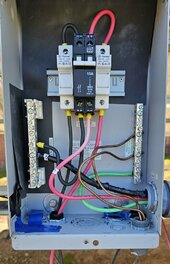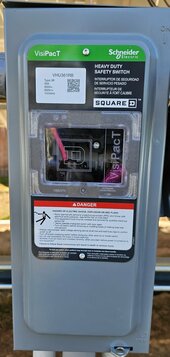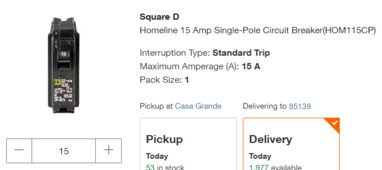all panels are identical, and yes i know the vinyl is cracking on them, here in arizona we are a very dry climate thankfully, but i also plan to go through and put sealer on them, they are used panels, i paid 20 bucks a piece, the faces have no spider webing, no de-lamination, no air pockets or bubbling like ive seen on others its just the vinyl backing.
View attachment 208983
I see a few major problems at work here.
First, it is very nice that you built a ground mount for your panels. Except every panel by a reputable manufacturer has a specification sheet and an installation sheet. These sheets detail exactly where the panel can be mounted to the rails in both the portrait or vertical position. If you don't follow those mounting positions, then the panel frames will not hold up for long due to lack of proper support. To me, it looks like the photos show the panels mounted near their edges leaving little to no support in the center of the panel.
Second, panels need to be grounded. The fact that you screwed in a bracket to the panel frame and the steel tubes is not acceptable evidence of proper grounding of the panels to earth. I suggest you obtain a UL listed grounding lug for PV panels and connect to each panel and then run your 8 or 6 awg bare copper wire in as close to a single run as you can to a grounding rod at the array. While the posts are in cement and cement is a ground conductor, it is not a substitute for a grounding rod.
Third and most important is that "cracks" you have shown in your photos on the back side of the panels. That material is not vinyl and cannot be repaired by just caulking over the cracks. The purpose of that material was to encapsulate the PV wafers and their buss bars and soldered connections to keep them free of any moisture and corrosion causing hot spots. Those cracks have allowed moisture in as well as broken the encapsulated seal. And there are a lot of them. The silicon wafers that are the cells produce about a 0.5 volt differential when the sun strikes them and then these cells are connected in series within a panel. It is extremely important that no water of even the smallest amount is present or there will be a short circuit in the panel itself and current may flow in the wrong directions as well as flow from PV+ to ground or can even be PV- to ground. The new inverters that are transformerless and have built in MPPT charge controllers also have a built in GFCI DC breaker. If any current exceeding say 0.5 amps goes from PV to ground, then the inverter gfci breaker will trip and the PV will be cut off. Then you will have to go panel by panel and do exhaustive testing to find the culprit and remove it or try a repair. What I am saying is you cannot reliably fix these panels even if they don't fault right away and that is why they were taken out of service.
I strongly suggest that you remove any panel that has cracks. If buying used panels, a very careful inspection is required besides testing with a panel multimeter and ground fault detector.
Forth, the comments about using each MPPT controller vs. running a string in parallel is simply wishful thinking. PV panels have been run in parallel strings for many, many years and there simply is no drawback to running strings in parallel. In fact, each MPPT controller on a Sol-Ark 15 has 2 parallel string input capacities for a total of 3x2 = 6 strings.









